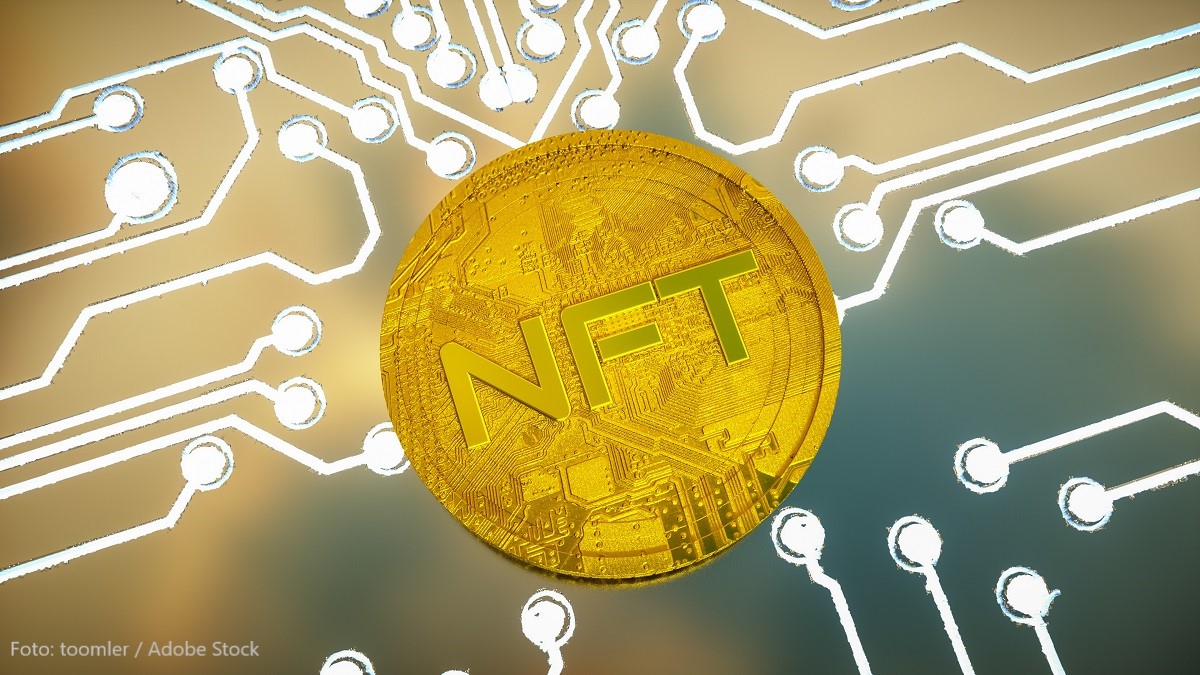15.04.2021
NFTs – What are they? And if so, how many?

Author: Adrian Freidank
What do Twitter founder Jack Dorsey, the American professional basketball league NBA, the band Kings of Leon and the digital artist Beeple have in common? NFTs or non-fungible tokens. These still relatively new digital tokens can be used to transfer digital content and the rights to digital content via the blockchain; each token is unique and represents a “digital item”.
Dorsey recently auctioned off his first tweet for 2.5 million dollars via NFT, and the NBA runs Top Shot, a platform where you can “own” important moments in NBA history in the form of short video clips like digital trading cards via NFTs. The Kings of Leon sold their last album via NFTs, and Beeple broke several records by auctioning off a collage of 5,000 photos at Christie’s for almost 70 million dollars.
NFTs are an asset class from the field of cryptocurrencies, or rather blockchain technology. The term fungible stands for “replaceable”, “interchangeable” or “substitutable” and is intended to distinguish NFTs in particular from “normal” cryptocurrencies. With these “normal” cryptocurrencies, such as bitcoins, every coin is the same. As with a traditional currency, when using and paying with bitcoins, it does not matter which concrete coin is used to pay, or which concrete coin is transferred. NFTs, on the other hand, are unique, which is why they are used to link the “ownership” of a particular asset to a unique NFT, thereby assigning it to a particular person. Put simply, this can be done, for example, by linking the asset that is to be transferred (for example, Jack Dorsey’s first tweet) to an individual NFT. This NFT is then transferred via a blockchain transaction from the seller or auctioneer to the buyer. This can even be organised as a so-called smart contract, where the transaction is automatically triggered upon payment of the purchase price and the NFT transferred. The buyer then has this NFT in its wallet and can thus prove that it is the “owner” of the asset concerned. However, such a smart contract can do much more than this: for example, it can be programmed in such a way that the artist not only receives the selling price on the first sale but, in addition, a certain percentage on any subsequent sale. This can be arranged to take place automatically at least where the purchase price is paid in a cryptocurrency that uses the same blockchain as the NFT.
From a legal perspective, it should be noted that the legal situation in most cases is not determined by the NFT, but needs to be regulated separately, outside the respective blockchain. The above examples are all about transferring digital content (digital artworks, video clips, tweets), which gives rise to the question of what exactly is to be transferred in legal terms. In the case of the Kings of Leon album, for example, the NFT gives the owner the right to download the album, including a special album cover. In the case of NBA Top Shot, according to the terms of use, the purchaser only acquires “ownership” of the NFT, together with the licence to view the “purchased” moment in the app and resell it, swap it or give it away. This does not, therefore, mean that the purchaser actually owns this “moment” (meaning the video clip); the purchaser cannot, for example, prohibit others from uploading the same video clip to YouTube. In the cases of Beeple and Jack Dorsey, the seller and the buyer presumably defined in a licence agreement what it means to “own” a tweet or a digital work of art. In this context, the NFT merely documents the transfer of rights, which takes place via a “normal” copyright licence, outside the blockchain. The automatic receipt by an artist of payments on further sales must also be agreed in a contract outside the blockchain. Only the actual enforcement of this legal obligation then takes place automatically, via the smart contract, on the blockchain.
The advantage of using NFTs is the tamper-proof blockchain technology. However, one can certainly question whether a tamper-proof blockchain is actually necessary for the above-described use cases. A clear disadvantage is the enormous energy consumption of blockchains, especially ones such as Bitcoin or Ethereum. Even though the energy consumption of a single transaction is, of course, not the same as the energy consumption of the entire system and the Flow blockchain used by NBA Top Shot, for example, probably consumes a much smaller amount of energy than is used by many well-known cryptocurrencies, people should ask themselves whether, in 2021, the dubious benefits of NFTs can justify their energy consumption, even if comparatively low. In addition, it should always be taken into account that NFTs usually do not stand on their own and, therefore, need to be accompanied by legal rules in the form of traditional contracts for a clear definition of the licensing, protection and exploitation rights and other legal framework conditions.

Adrian Freidank
Counsel
Cologne
adrian.freidank@luther-lawfirm.com
+49 221 9937 25724